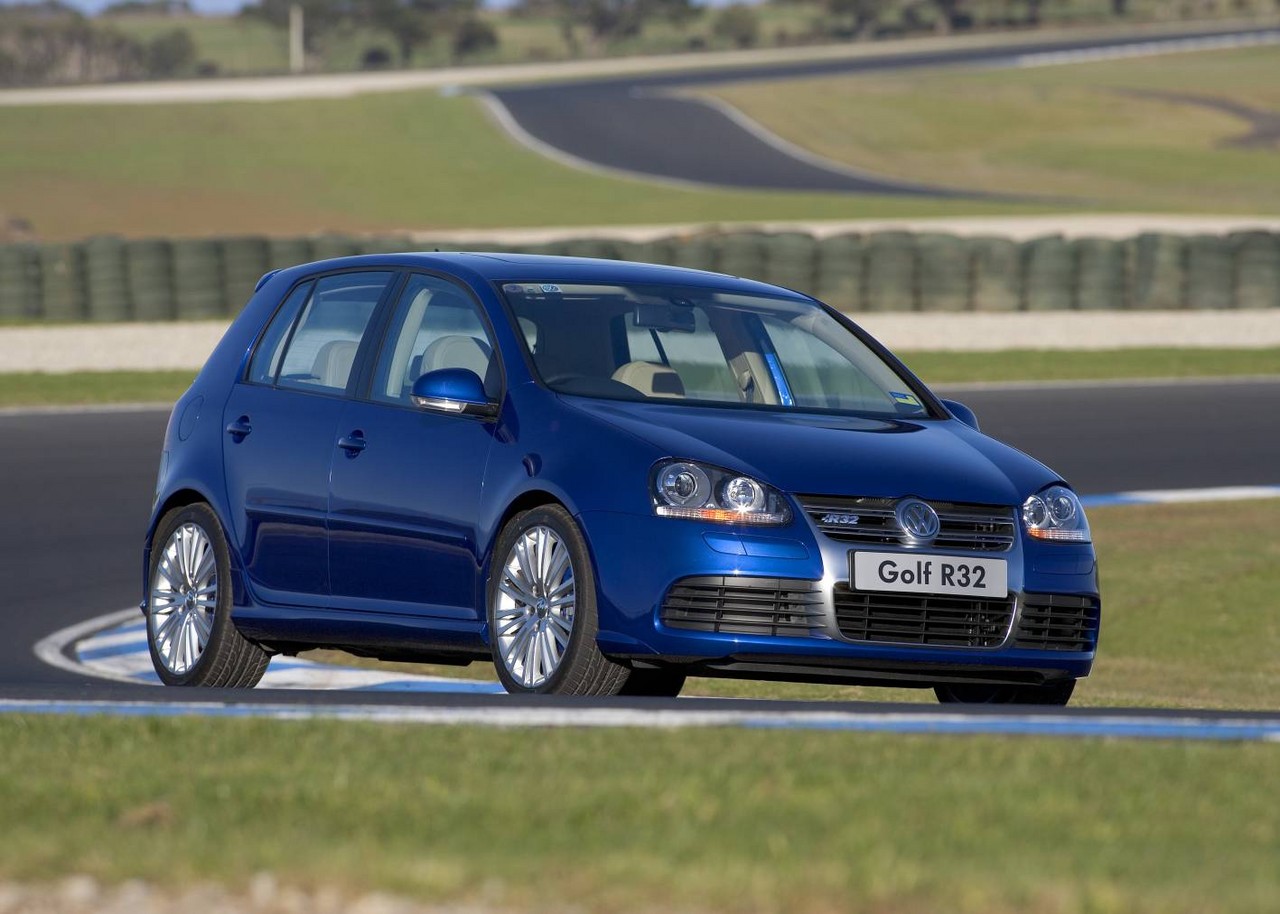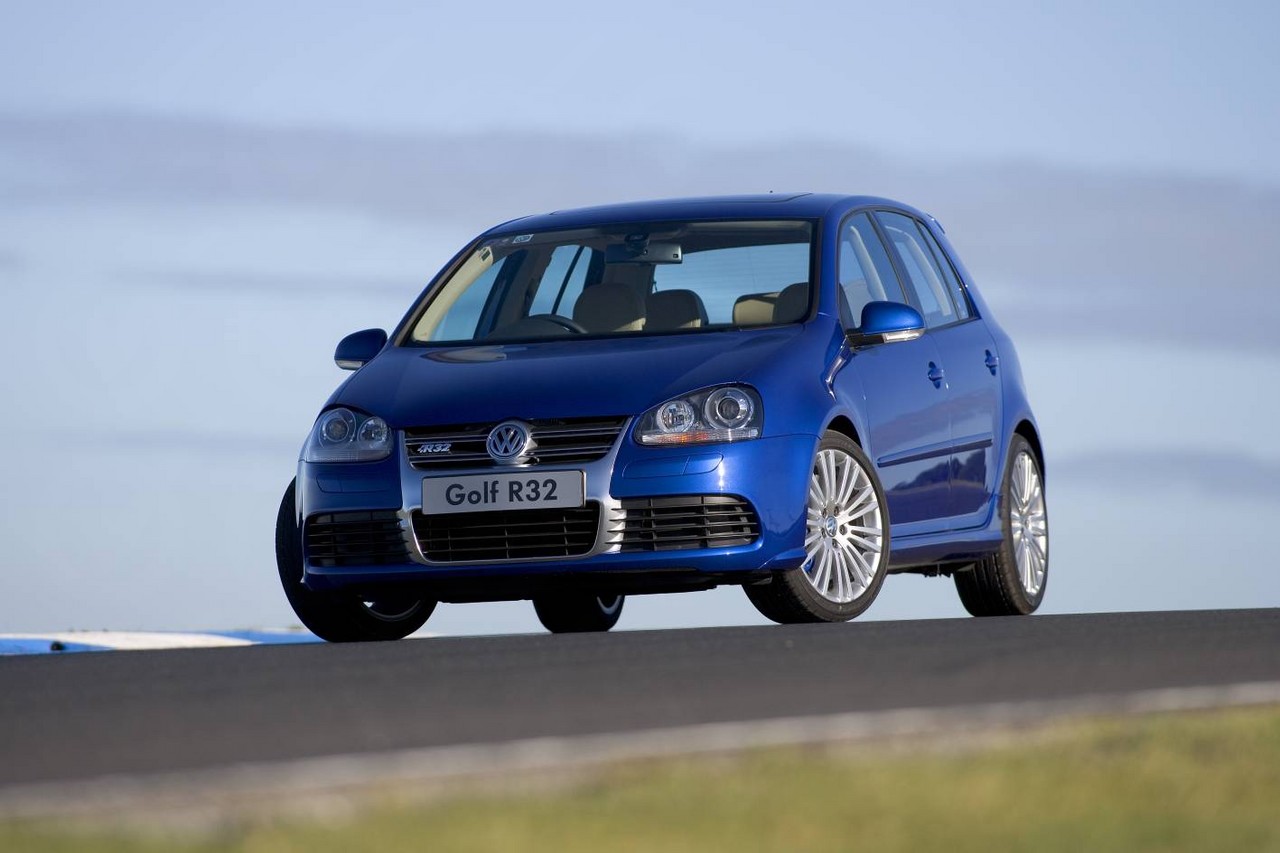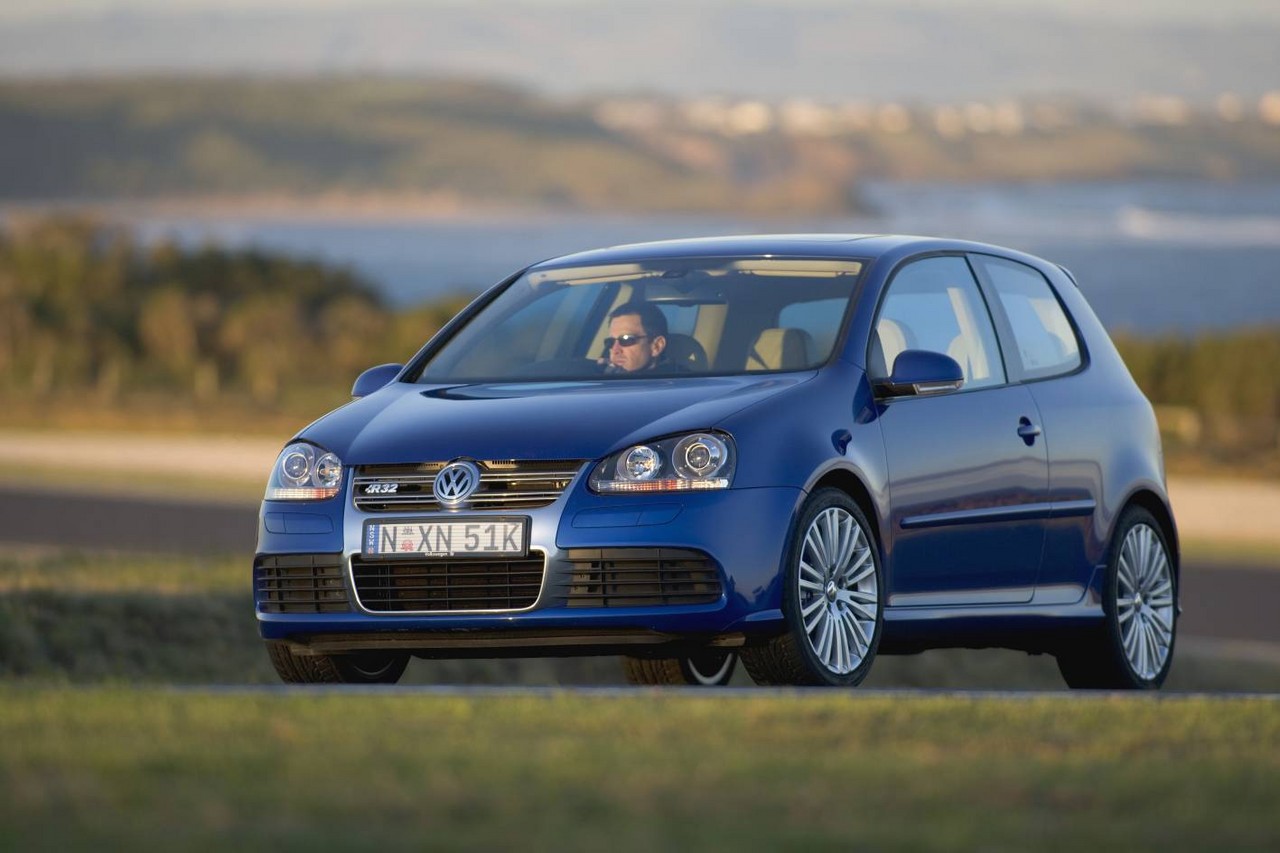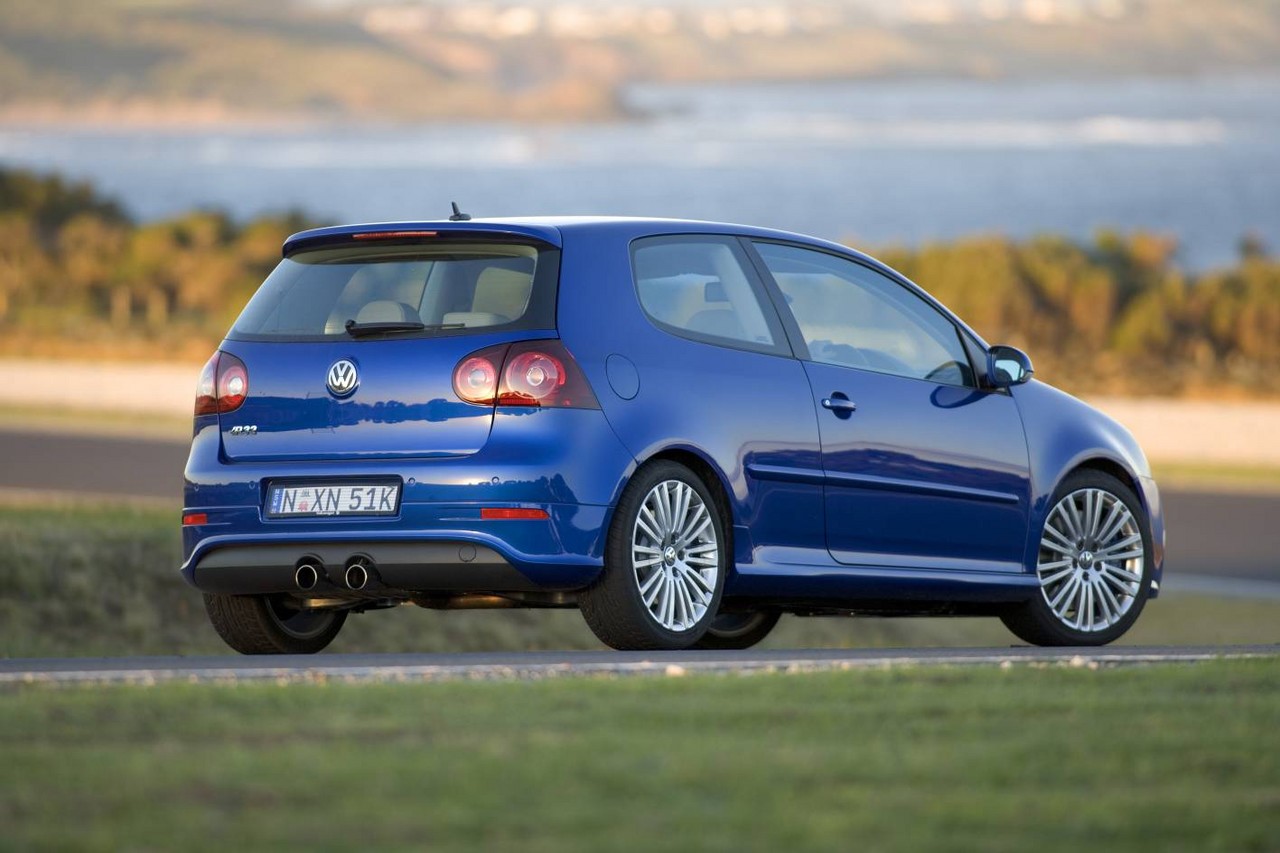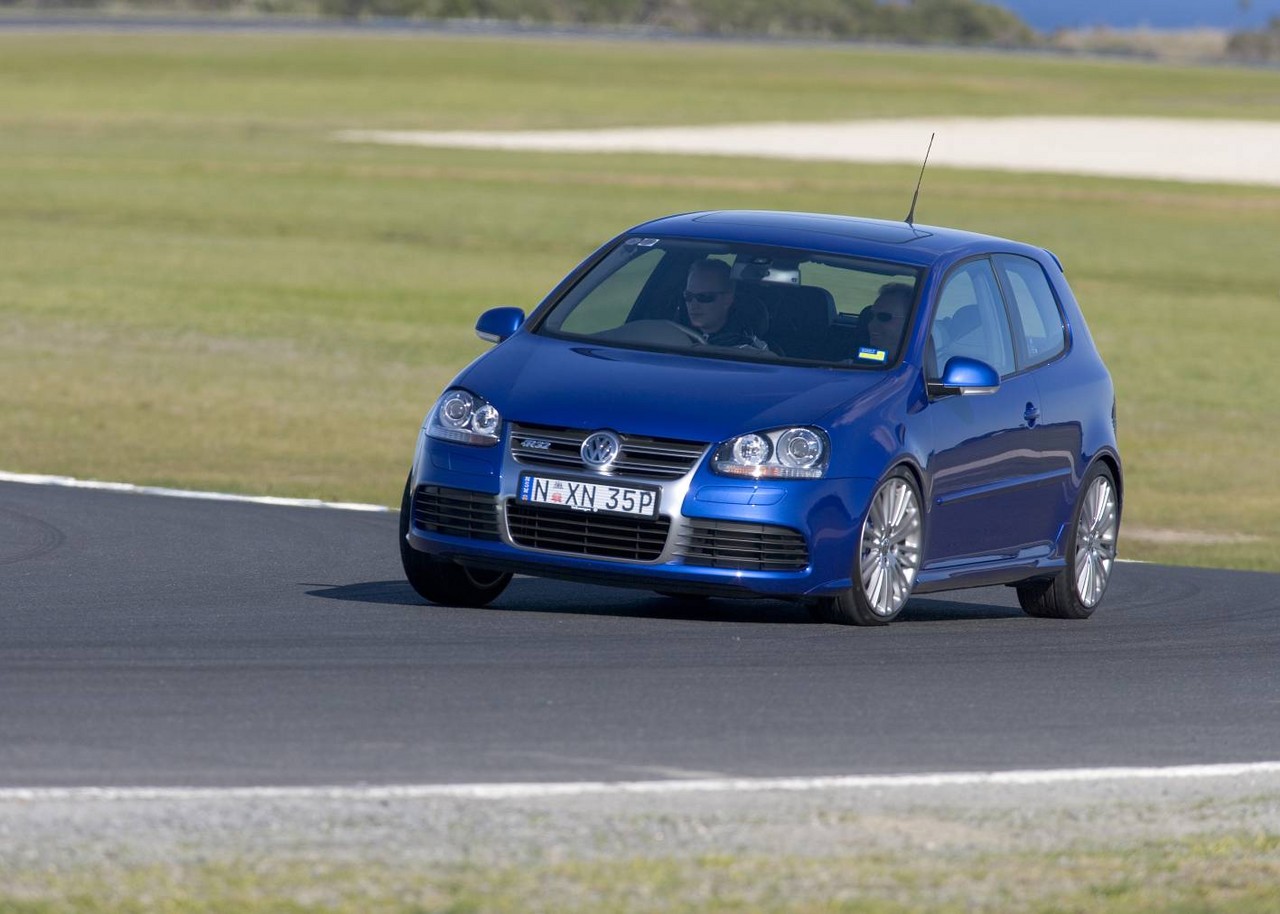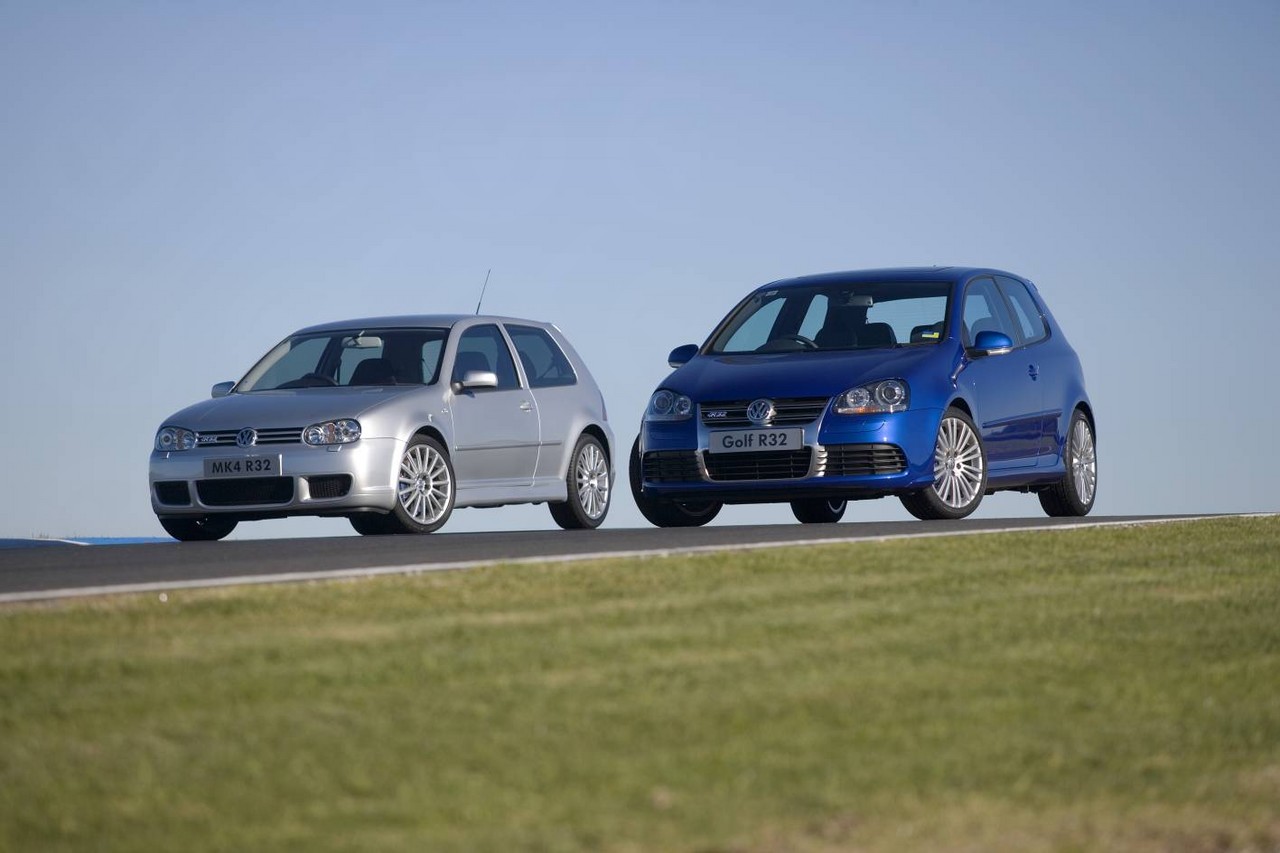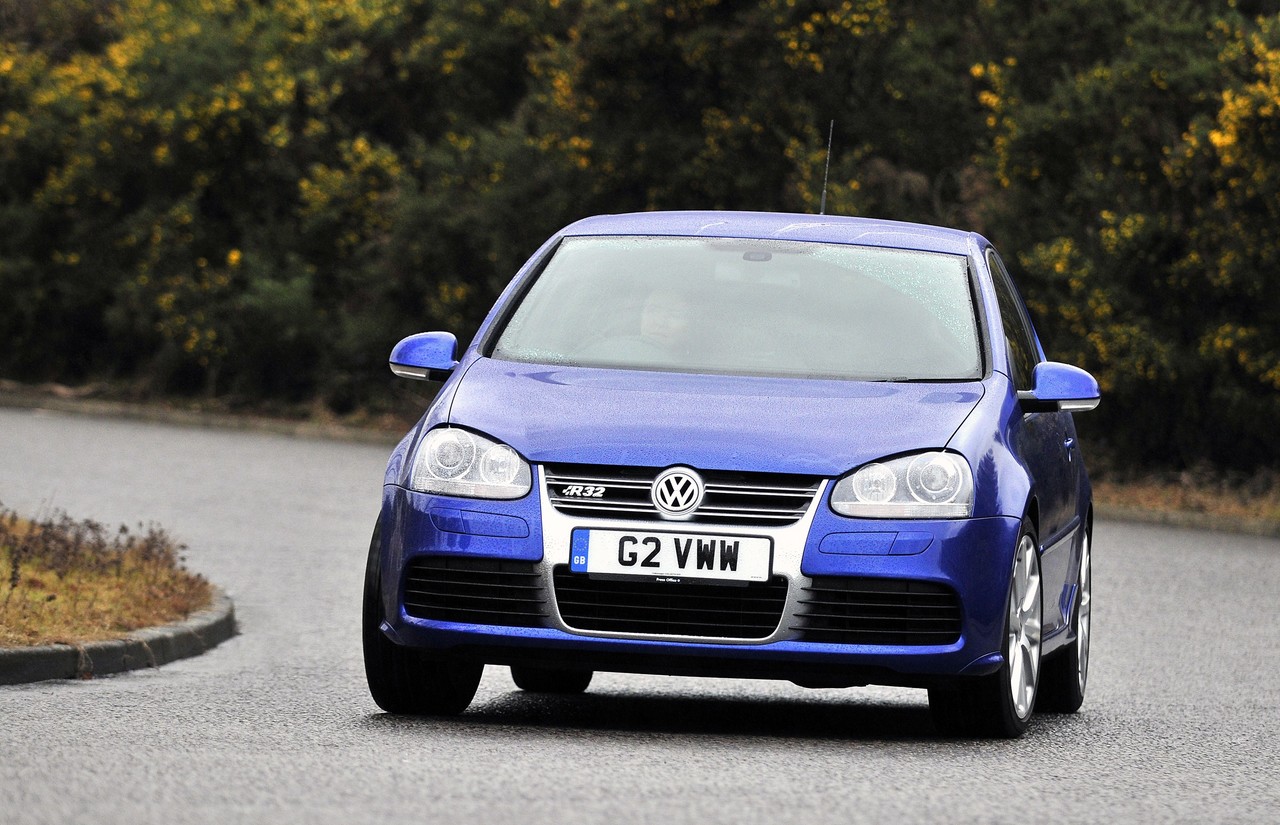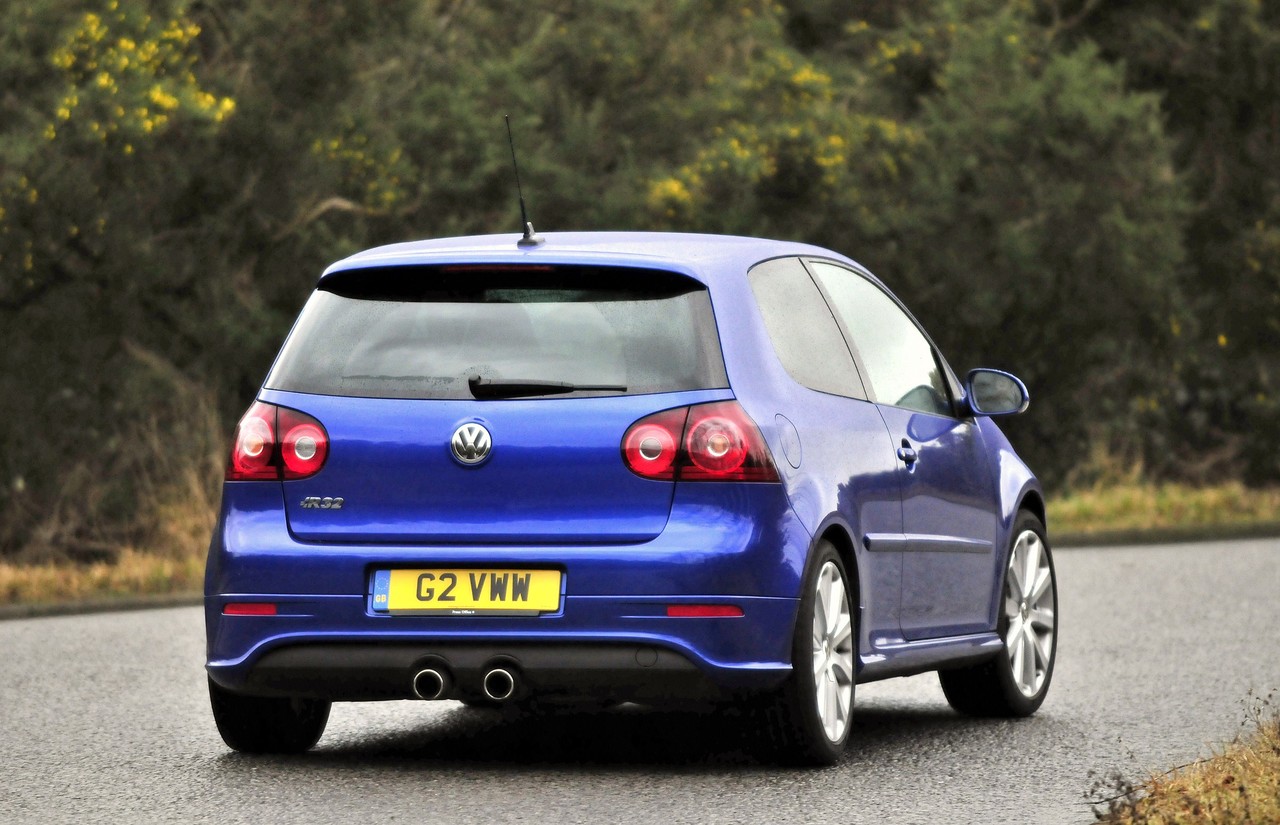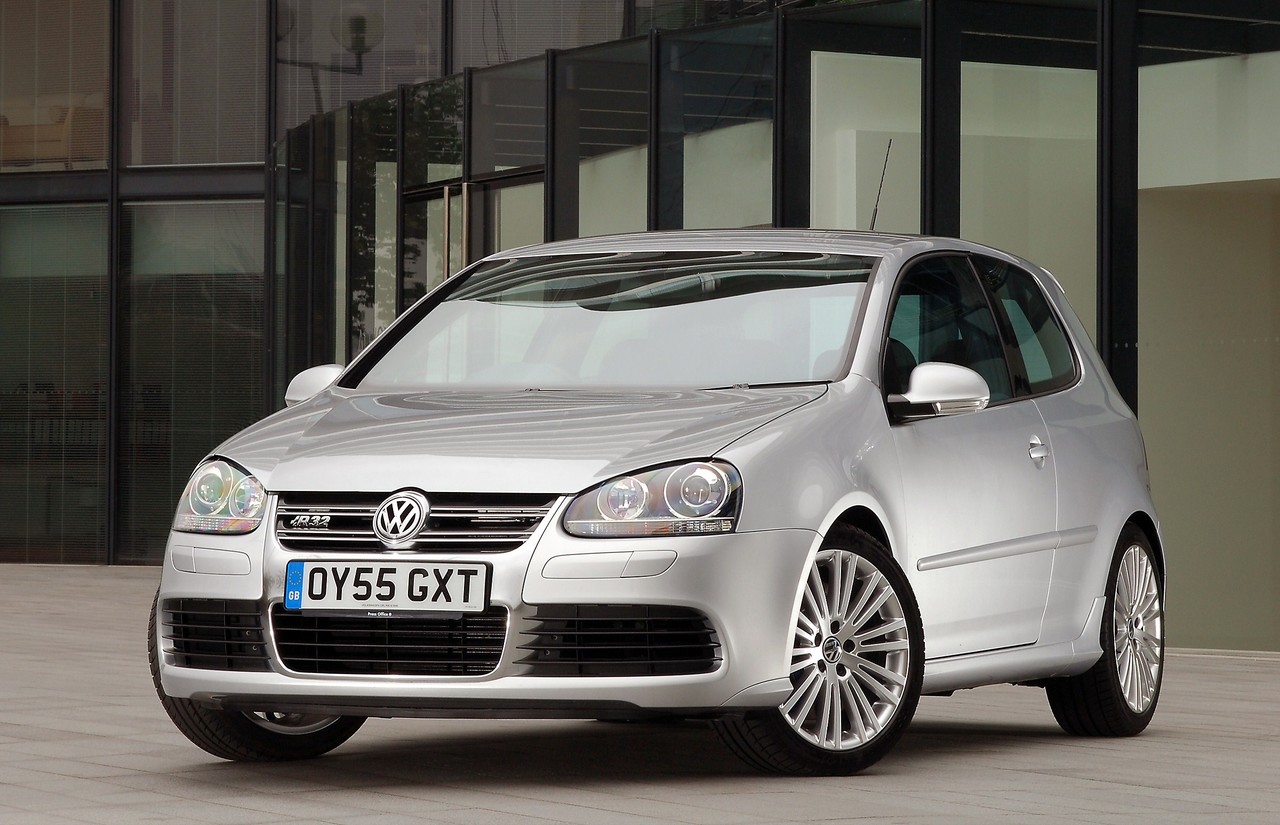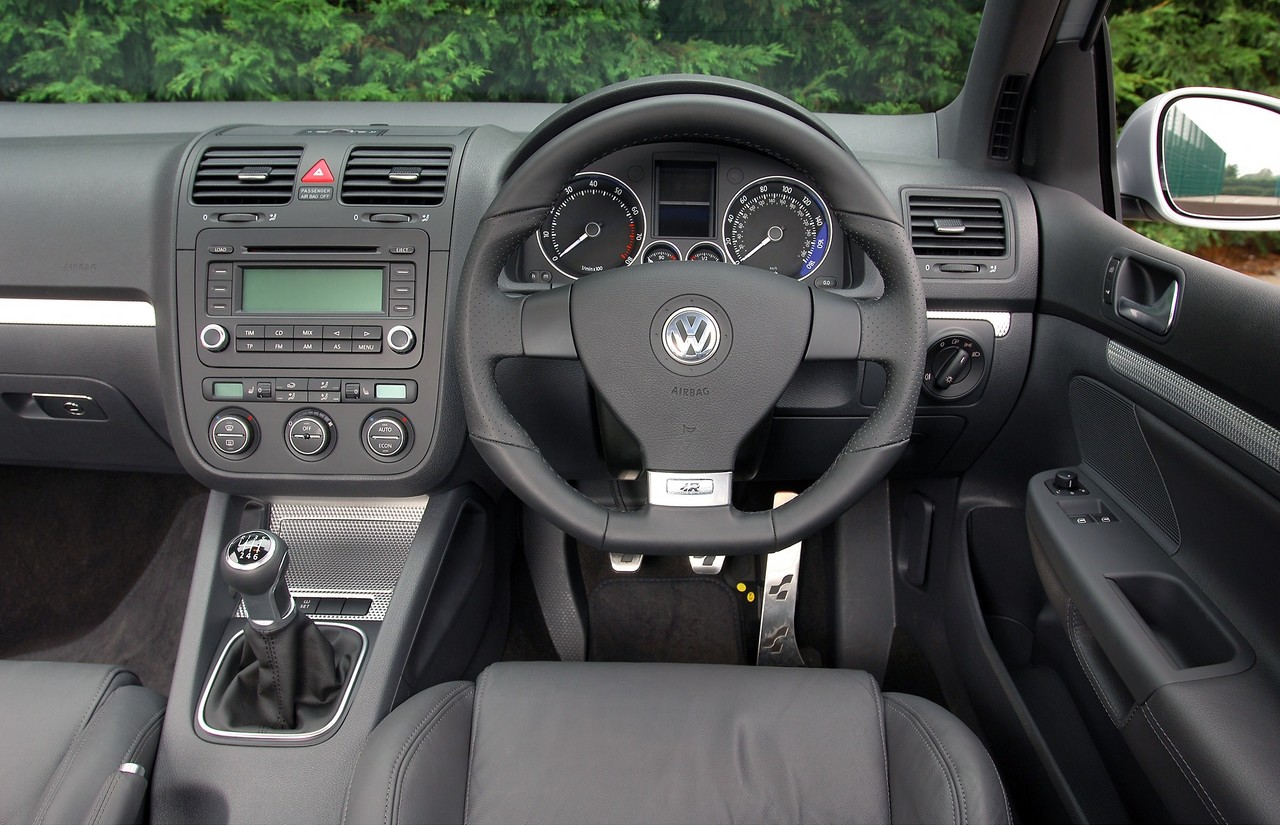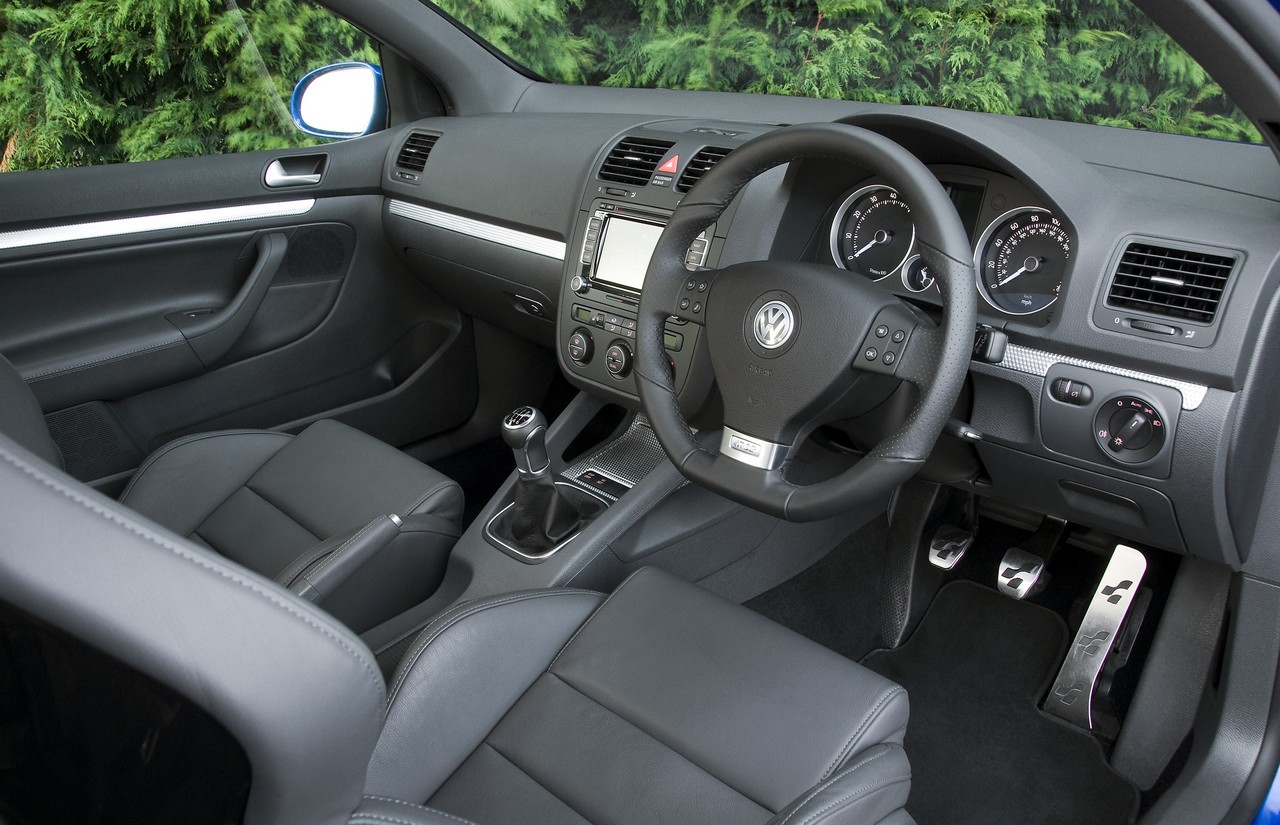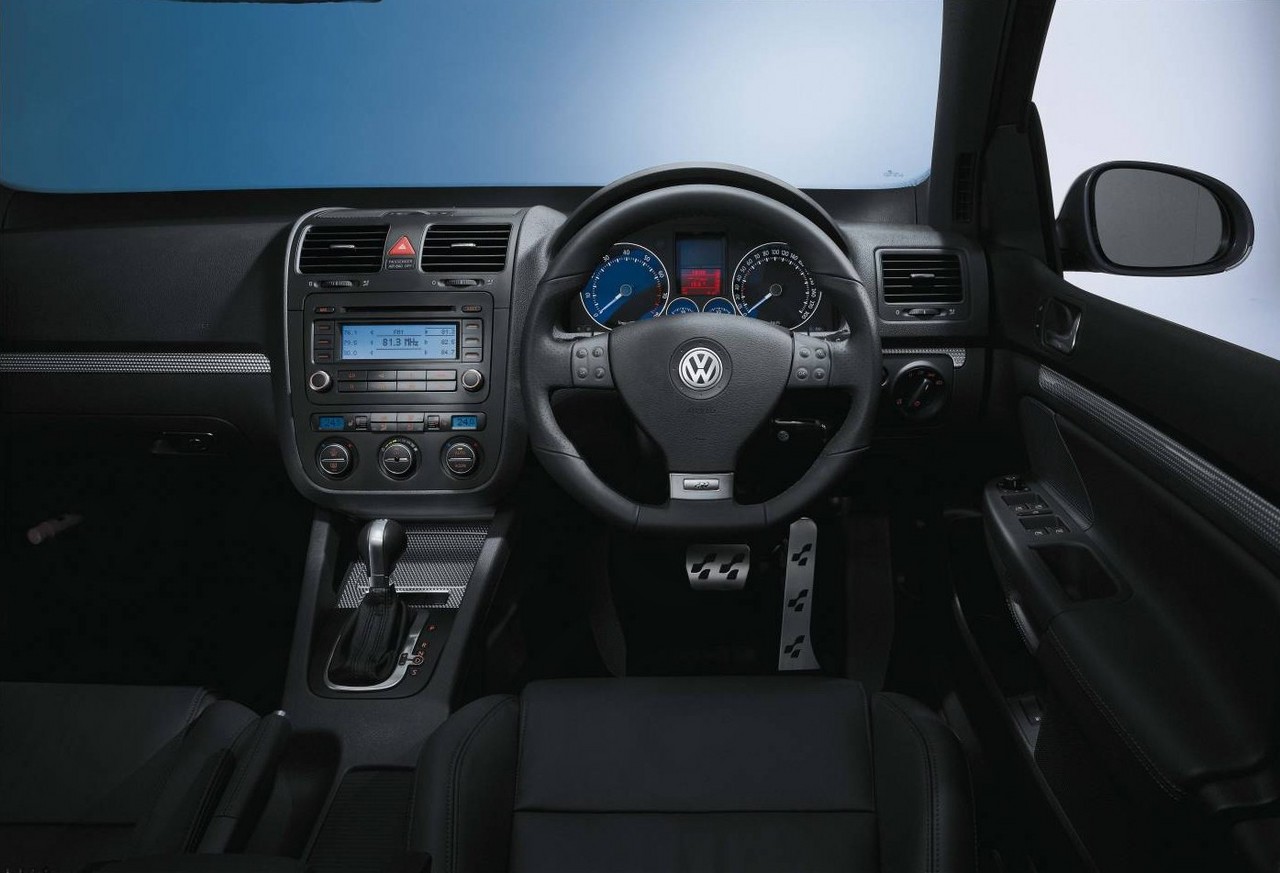
- Responsive and free-revving 3.2-litre V6 engine
- DSG provides fast gearshifts
- Supportive front seats
- Impressive dynamics and acceptable compliance
- Well-weighted steering
- Powerful brakes
- Added weight of AWD system blunts agility
- Added weight of V6 engine makes Golf R32 slightly nose-heavy
- Tyres can rub on wheel housings
- For DSG, reports of harsh or jerky gearshifts due to excessive wear in the bushings of solenoid valves in the Mechatronic unit.
Overview
Released in Australia in July 2006, the Volkswagen Mk.5 Golf R32 was available as a three- or five-door hatchback. Manufactured in Wolfsburg, Germany, the all-wheel drive VW Golf R32 was powered by a 3.2-litre V6 petrol engine that was mated to either a six-speed manual or double clutch transmission.
VR6 Engine (EA390)
The 3189 cc BUB EA390 VR6 engine had a 15-degree ‘V’ angle, a grey cast iron block with 84.0 mm bores and a 95.9 mm stroke, a die-forged steel crankshaft with seven main bearings, an aluminium cylinder head, electronic sequential fuel injection, double overhead camshafts (simplex roller chain-driven), continuous intake and exhaust camshaft adjustment, four valves per cylinder driven by roller rocker fingers with hydraulic clearance compensation, Bosch ME7.1.1 engine management and a compression ratio of 10.85:1. Of the camshafts, the intake camshaft had 52 degrees of adjustment, while the exhaust camshaft had 22 degrees of adjustment.
With a manual transmission, the Golf R32 could accelerate from rest to 100 km/h in 6.5 seconds; with the six-speed DSG transmission, however, 6.2 seconds was required. Furthermore, the Golf R32 had a top speed of 250 km/h.
| Years | Engine | Trans. | Peak power | Peak torque | |
|---|---|---|---|---|---|
| Golf R32 | 2006-10 | 3.2-litre BUB petrol VR6 |
6sp man., 6sp DCT |
184 kW at 6300 rpm | 320 Nm at 2500-3000 rpm |
Fuel consumption
With the DSG transmission, fuel consumption for the Golf R32 over the combined ADR 81/01 test cycle was 9.8 litres per 100 km; for the manual transmission, consumption was 10.8 litres per 100 km. The Golf R32 required 98 RON premium unleaded petrol (PULP) and was complied with Euro IV emissions standards.
DSG transmission
The transversely mounted DSG unit had two wet clutches, two input shafts and two outputs shafts. In this arrangement, Clutch 1 (C1) operated the odd gears (plus reverse), while Clutch 2 (C2) operated the even gears. When driving, the next-higher gear ratio could be engaged without actually being activated. To change gears, the clutch for the current gear would open and the other clutch (for the higher gear) would engage under electrohydraulic control. Since the opening and closing actions of the two clutches overlapped, Volkswagen claimed that the system provided smooth gearshifts in less than four-hundredths of a second.
In addition to its fully automatic shift mode, the DSG had a Tiptronic function to permit manual gear selection – this could be performed via the steering wheel gearshift paddles.
Dimensions
Compared to the standard Volkswagen Mk.5 Golf , the Golf R32 was 42 mm longer (at 4246 mm) and 20 mm lower (1465 mm), while width (1759 mm) and wheelbase length (2578 mm) were unchanged. Visually, the Golf R32 could be identified by its ‘R32’ badges on the radiator and tailgate, chrome radiator grille highlights, radiator grille surround with brushed aluminium finish, front lower air intake with black grille inserts, rear spoiler, unique rear bumper with centrally-mounted dual chrome exhaust pipes and widened side sill panels.
Suspension and steering
The VW Mk.5 Golf R32 had MacPherson strut front suspension (with lower A-arms and an anti-roll bar) and independent, four-link rear suspension which had three lateral control arms (the spring mounting, track rod and upper control arm), a trailing link at each wheel, coil springs and an anti-roll bar.
The VW Mk.5 Golf R32 had electric, power-assisted steering.
Haldex all-wheel drive system (4MOTION)
The Volkswagen Golf R32 had a second generation Haldex all-wheel drive system which consisted of:
- A hydraulic pump driven;
- A wet multi-plate clutch; and,
- An electronically-controlled throttle valve.
Any difference in the rotational speeds of the front and rear axles (as caused by wheel slip) would cause the hydraulic pump to generate oil flow such that a clutch piston would compress the clutch pack. Although the second generation Haldex system was reactive (i.e. engaged after wheel slip had occurred), it could engage within the time required for a quarter of a wheel’s rotation for a 50:50 front:rear torque split. In normal conditions, the system provided a default 90:10 front:rear torque distribution.
The Golf R32 was also fitted with a front electronic differential lock.
Safety equipment
Standard safety equipment for the VW Mk.5 Golf R32 included dual front airbags, front seat-mounted side airbags, full-length curtain airbags, ABS, electronic brake force distribution, brake assist, electronic stability control (ESP), traction control (ASR) and front seatbelts with pretensioners and load limiters.
Brakes
The VW Golf R32 had 345 mm by 30 mm vented front brake discs and 310 mm by 22 mm vented rear discs. For the Golf R32, the brake calipers were painted blue.
Euro NCAP crash testing
In Euro NCAP crash testing , a 1.6-litre Volkswagen Mk.5 Golf received a five star adult occupant protection rating with a score of 32.83 out of 37. In the frontal offset impact test, protection from serious leg injury was marginal for the driver and there was a slight risk of serious chest injury for both front occupants. In the side impact and pole tests, the Golf was awarded maximum points.
Features: Golf R32
Standard features for the Volkswagen Golf R32 included 18 x 7.5J twenty-spoke ‘Zolder’ alloy wheels with 225/40 R18 Y-rated tyres, a ten speaker sound system (Volkswagen’s ‘RCD 500 Plus’) with an eight-channel 250 watt amplifier and a six-disc in-dash CD changer, dual-zone climate control air conditioning (‘Climatronic’), front sports seats, Vienna leather upholstery, bi-xenon headlights with washers, a rear fog lamp, automatic headlights, rain-sensing wipers, 60/40 split and folding rear seats, a three-spoke steering wheel with perforated-leather, an aluminium/leather gear knob and gaiter, remote central locking, power windows, power adjustable and heated mirrors, a height and reach adjustable steering wheel, height adjustable front seats, an auto-dimming rear view mirror, tinted windows, two 12 volt power sockets (centre console and luggage compartment), low tyre pressure indicator, front and rear carpet mats, aluminium pedals, ‘Engine Spin’ aluminium inserts (for the dashboard, centre console and doors), trip computer, an alarm system (with interior monitoring and tow-away protection) and an immobiliser.
The Golf R32 had a space-saving spare wheel.
Options: Golf R32
Extra-cost options for the Golf R32 included:
- Recaro front seats in Vienna leather with embossed ‘R’ logos, heating and height adjustment (which omitted side airbags);
- A power-operated glass sunroof with sunblind;
- A power adjustable driver’s seat;
- Rear parking sensors;
- A satellite navigation system with a 6.5-inch colour screen; and,
- Walnut inserts for the dashboard, centre console and doors.
Paint colours
The VW Mk.5 Golf R32 was available in Deep Blue Pearl Effect, United Grey Metallic, Reflex Silver Metallic and Black Magic Pearl Effect paint finishes.
Brochure
Specifications
- Specifications: Volkswagen Mk.5 Golf R32 (July 2006)
- Specifications: Volkswagen Mk.5 Golf R32 (August 2008)
Related links
